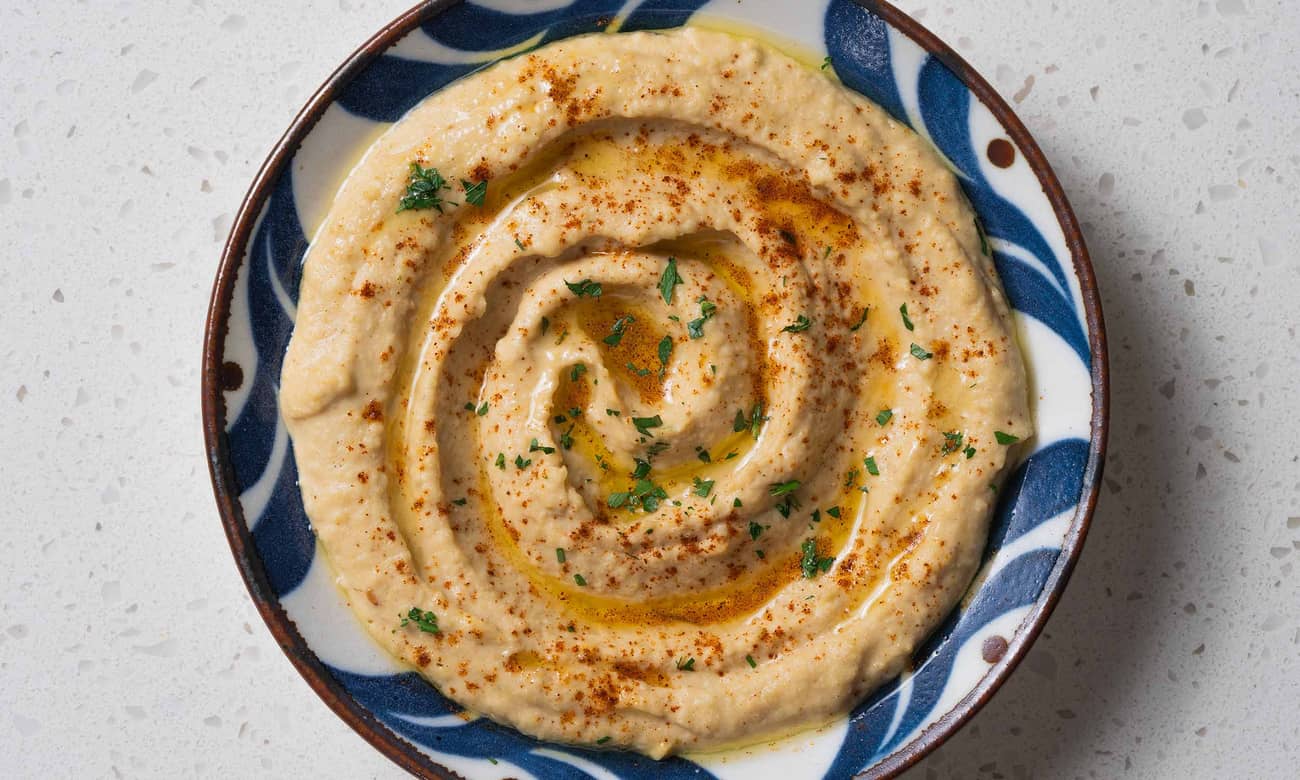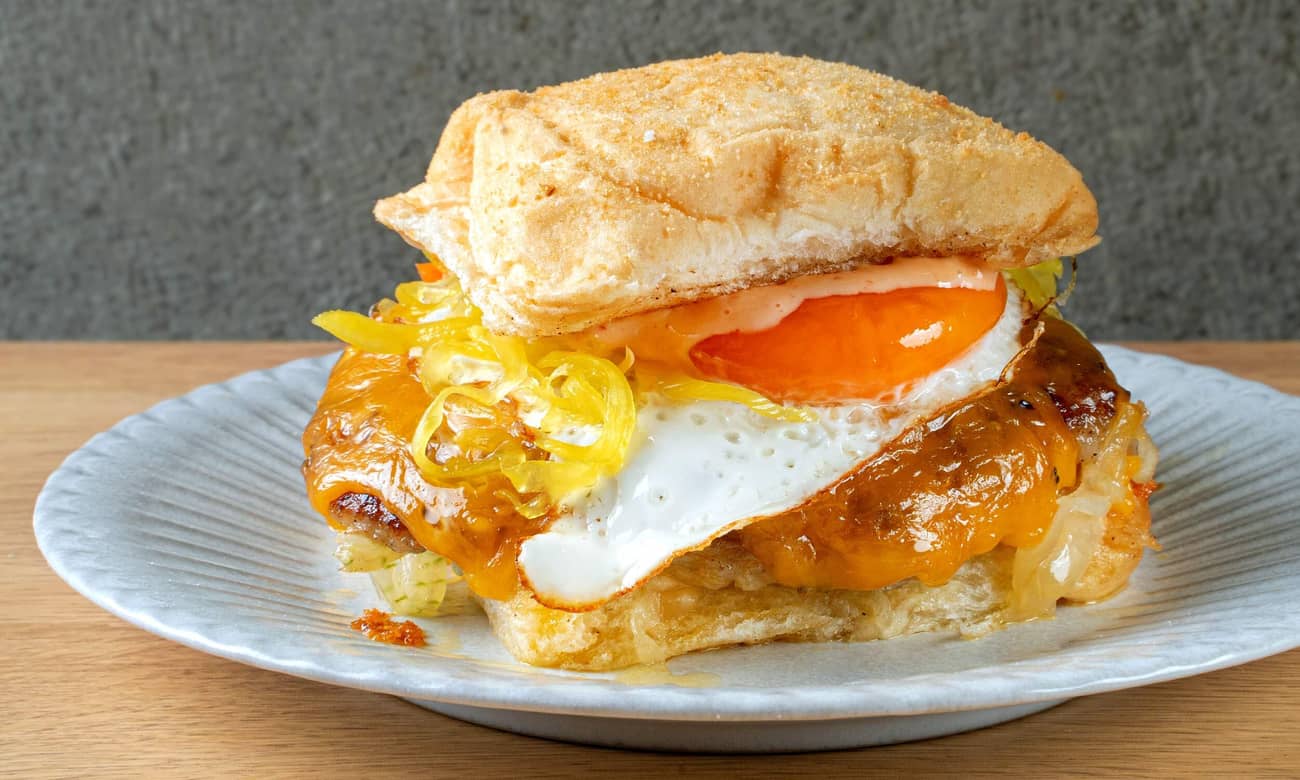If we have minatamis na bao, Singapore and Malaysia have kaya: a sweet, creamy coconut-egg custard perfumed with pandan leaves. Kopi tiams (coffee shops) slather it between charcoal-grilled bread as kaya toast, with soft-boiled eggs and a cup of kopi waiting on the side.
Kaya is readily available in Singapore and Malaysia, but not so much in the Philippines. Good thing you can make it from scratch in 15 minutes, and it comes out just as great, if not better!
Local coconut jam or coco jam is also called matamis or minatamis na bao. In Tagalog, bao (pronounced ba-o, with two syllables) means "coconut shell".
Minatamis na bao has a dark brown color and a syrupy viscosity. You make it by cooking down coconut milk and sugar until it's reduced and caramelized—almost like a coconut dulce de leche. We have a recipe for it here.
Kaya has the same ingredients as minatamis na bao, but with the addition of eggs and pandan leaves. These give the spread a custard-like texture and a nutty fragrance from the pandan.

Kaya comes in colors ranging from golden brown to vibrant green. Singapore separates kaya into two types: caramel-colored Hainanese kaya, and green-tinted Nyonya kaya.
The color you end up with will depend on two things: the sugar you’re using and how you infuse the pandan.
Kaya will pick up the color of the sugar you’re using. White sugar gives you a pale base and a clean sweetness that works great for green kaya. Darker sugars like coconut, palm, and muscovado sugar will result in colors between a caramel tan to a chocolate-like brown.

Some kaya recipes use gula melaka, solid brown bricks of palm sugar similar to our local panutsa. The boiled-down palm sugar takes on a deeper, almost smoky flavor that you won't get from regular sugar.
To keep the ingredients accessible, this kaya recipe uses white sugar with a bit of coconut sugar. This combination gives the kaya a golden brown color and a wisp of coconut sugar's caramel-like depth.
Most homemade kaya recipes steep pandan leaves in the coconut mixture. It's what we do in this recipe, too. This is enough to infuse its flavor, but not its green color. You will still end up with sugar-colored kaya.
To get green kaya, you will need to use fresh pandan extract. Blitz chopped pandan leaves with a bit of water in a blender or food processor until you get a mushy green mixture. Strain the pulp—the fragrant green liquid left over is your fresh extract, which you can now use to flavor and color your kaya.
This kaya recipe needs only four ingredients: coconut cream, egg yolks, your sugar of choice, and pandan leaves or extract.
For foolproof smooth and creamy kaya, cook it over a double boiler. This ensures that you're cooking over gentle heat the entire time. If you cook it straight in the pot, you risk curdling your eggs and forming lumps in your spread.
If you're lazy, you can actually toss all your ingredients in the double boiler for a one-bowl kaya situation. But we suggest whisking the yolks separately, tempering them with hot coconut cream, and adding the mixture at the last step. This makes your kaya extra rich, velvety, and creamy—almost like caramel fudge—ready to glide over toasted bread, cakes, and pastries.
Beat egg yolks: Whisk egg yolks in a small bowl. Set aside.
Set up double boiler: Add water to a pot until ½-inch deep. In a bowl big enough to fit over your pot, add coconut cream, pandan leaves (or extract for green kaya), sugars, and salt. Place bowl over the pot and heat over medium.
Temper eggs: Stir coconut cream until sugars have dissolved. Once mixture is warm, scoop about ½ cup of cream and slowly pour it into the beaten yolks, whisking the entire time. Pour the tempered egg mixture into the coconut cream, stirring constantly, until combined.
Cook until thick: Continue cooking and stirring until mixture is smooth and silky. Scrape the thickened jam into a glass jar or heatproof container. Let cool to room temperature before refrigerating. Store your kaya in the fridge for up to 2 weeks.
Coconut milk won't affect the flavor, but it will take twice or thrice as long to thicken. Expect about 20 minutes to an hour of cooking time.
Yes! As explained in the recipe, different sugars will affect your kaya's color: the darker the sugar, the darker the spread.
Different sugars affect the kaya's flavor as well. For example, using 100% sugar gives your kaya a clean, almost milky sweetness. 100% brown sugar, say muscovado, will have caramelized, almost bitter notes. Both ways are delicious.
You will need a blender or food processor to make fresh pandan extract. Here's a base recipe you can tweak as needed:
Note that kaya made with fresh pandan extract will take a bit more cooking time to thicken. Just keep stirring!
We don't recommend it! In terms of flavor, artificial pandan extract doesn't come close to fresh pandan. It even leaves a weird aftertaste.
If you can't get fresh pandan leaves, it's better to leave it out entirely than to use artificial pandan extract.

